Pharrell On His Cowboy-Western Epic for Louis Vuitton Men’s

- Oops!Something went wrong.Please try again later.
- Oops!Something went wrong.Please try again later.
- Oops!Something went wrong.Please try again later.
Christina Fragkou
This is an edition of the newsletter Show Notes, in which Samuel Hine reports from the front row of the global fashion week circuit. Sign up here to get it in your inbox.
For his sophomore show for Louis Vuitton Men’s in Paris, Pharrell Williams tackled—or lassoed, you might say—one of the most commonly-referenced motifs in fashion. For Fall-Winter 2024, Pharrell saddled up and explored the American West: cowboys, mostly, with some western workwear thrown in.
“First of all, it was an honor to get a chance to do something around the West and Western workwear vibes,” he told the press in a post-show meeting. “I feel like when you see cowboys portrayed, you see only a few versions. You never really get to see what some of the original cowboys really look like. They look like us, they look like me, they look Black, they look Native American.” In his own tan felted cowboy hat, flared jeans, and ostrich roper boots, it was hard not to think that there was a new sheriff in town. Paris had just seen a superb contribution to the western (as in: Wild West) fashion canon.
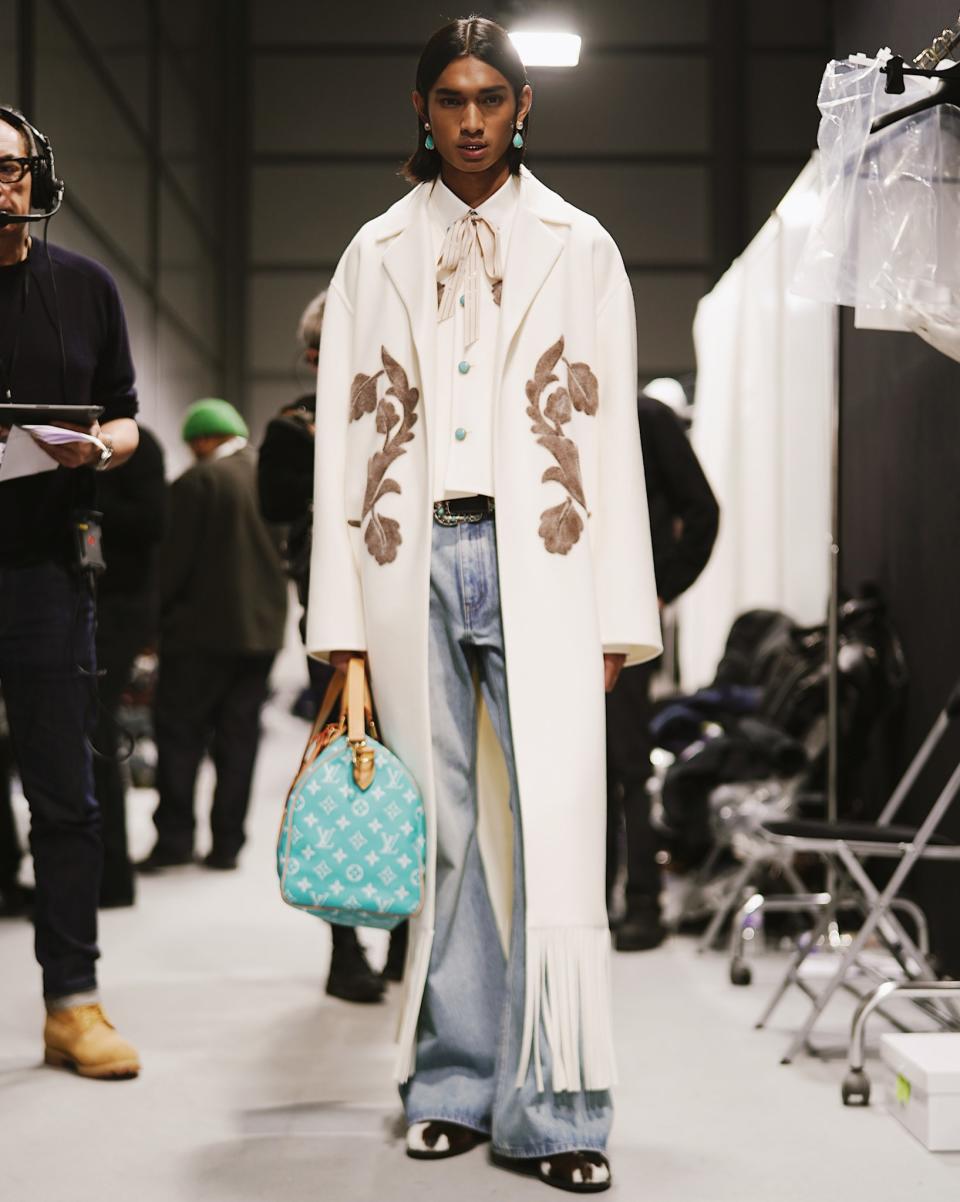
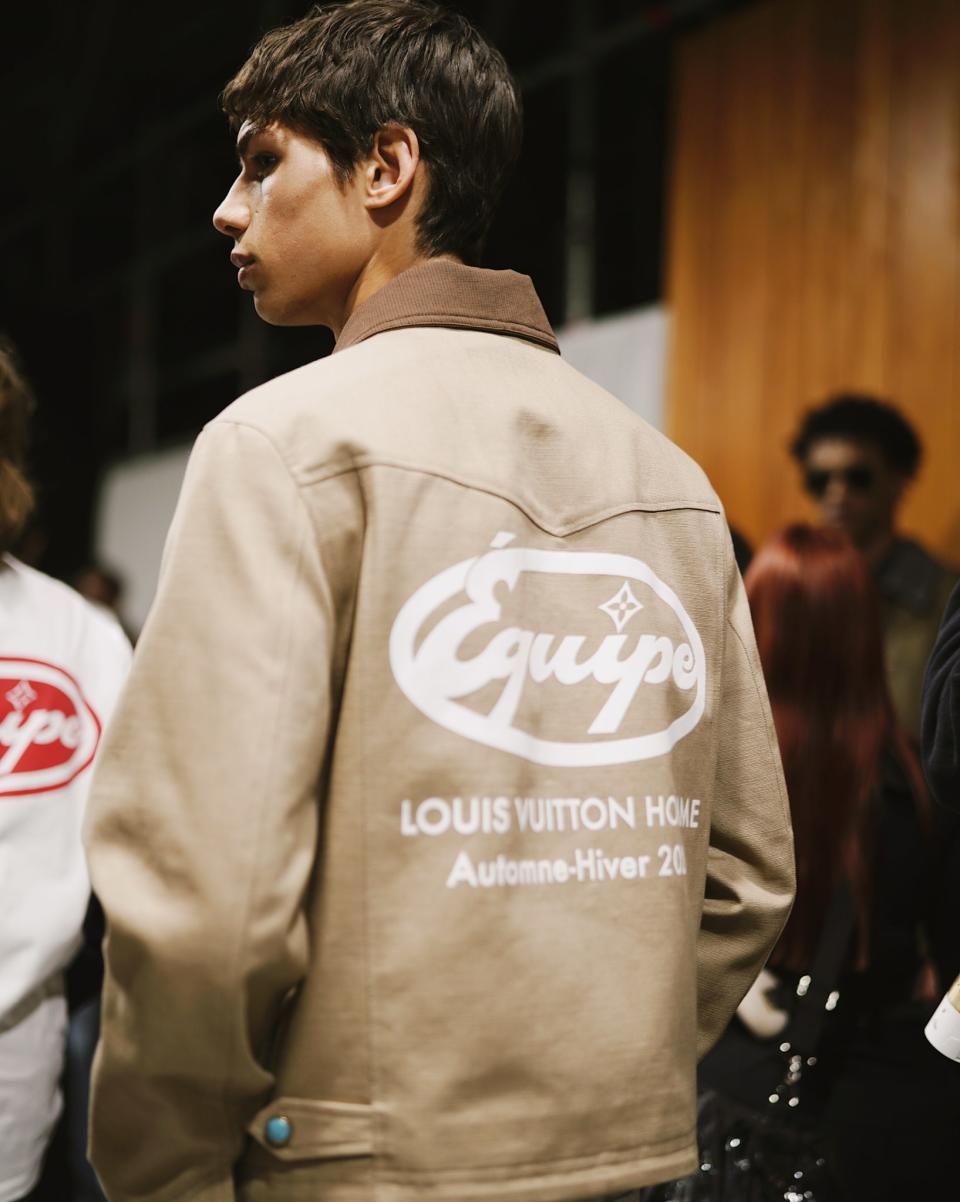
As the 1,300 guests filed into an auditorium erected on the grounds of the Frank Gehry-designed Foundation Louis Vuitton, it was obvious that Pharrell had already contributed healthily to LV’s bottom line. The promise of the Pharrell era was that he would bring the commercial intuition of an uber-stylish luxury client and the forward-thinking creative vision of, well, one of his generation’s foremost creative visionaries. Inside, clients and celebrities wore clutched Speedy bags of every color in the rainbow, and Pharrell’s debut collection was everywhere. It was obvious what had been flying off the rails at LV boutiques: “damouflage” blazers, embroidered varsity jackets, and even those beanies embroidered with chess boards of pearls, of which I lost count. It was, apparently, the highest-selling men’s collection in Louis Vuitton history.
Once Playboi Carti took his seat atop an enormous LV briefcase he had brought with him, the show began. The challenge of designing cowboy-inspired fashion is it’s been done by everyone already. Ralph Lauren, Dolce & Gabbana, Karl Lagerfeld at Chanel, Raf Simons at Calvin Klein, DSquared2, even Pharrell’s predecessor Virgil Abloh at Off-White—the motifs are instantly recognizable and literal. That well has long run dry.
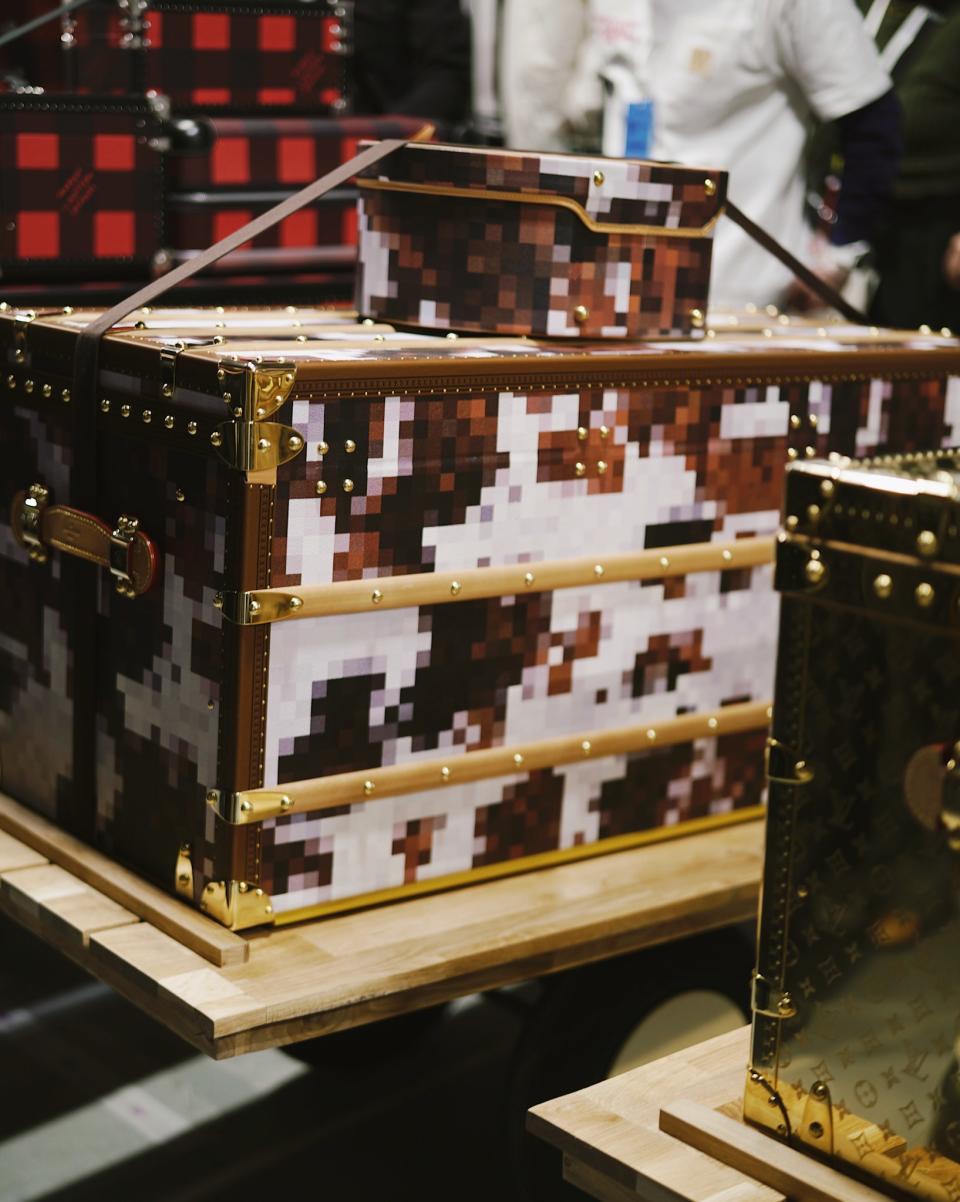
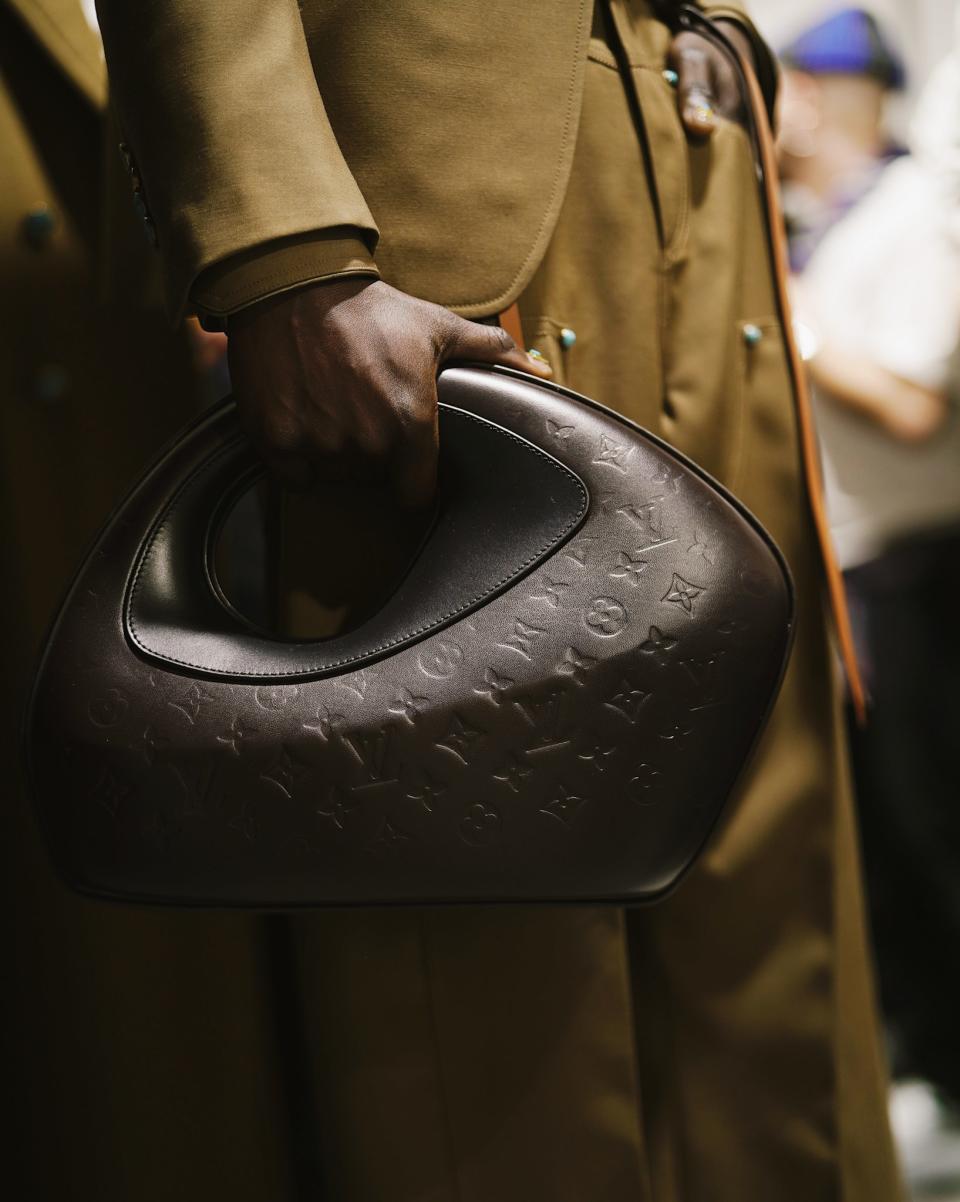
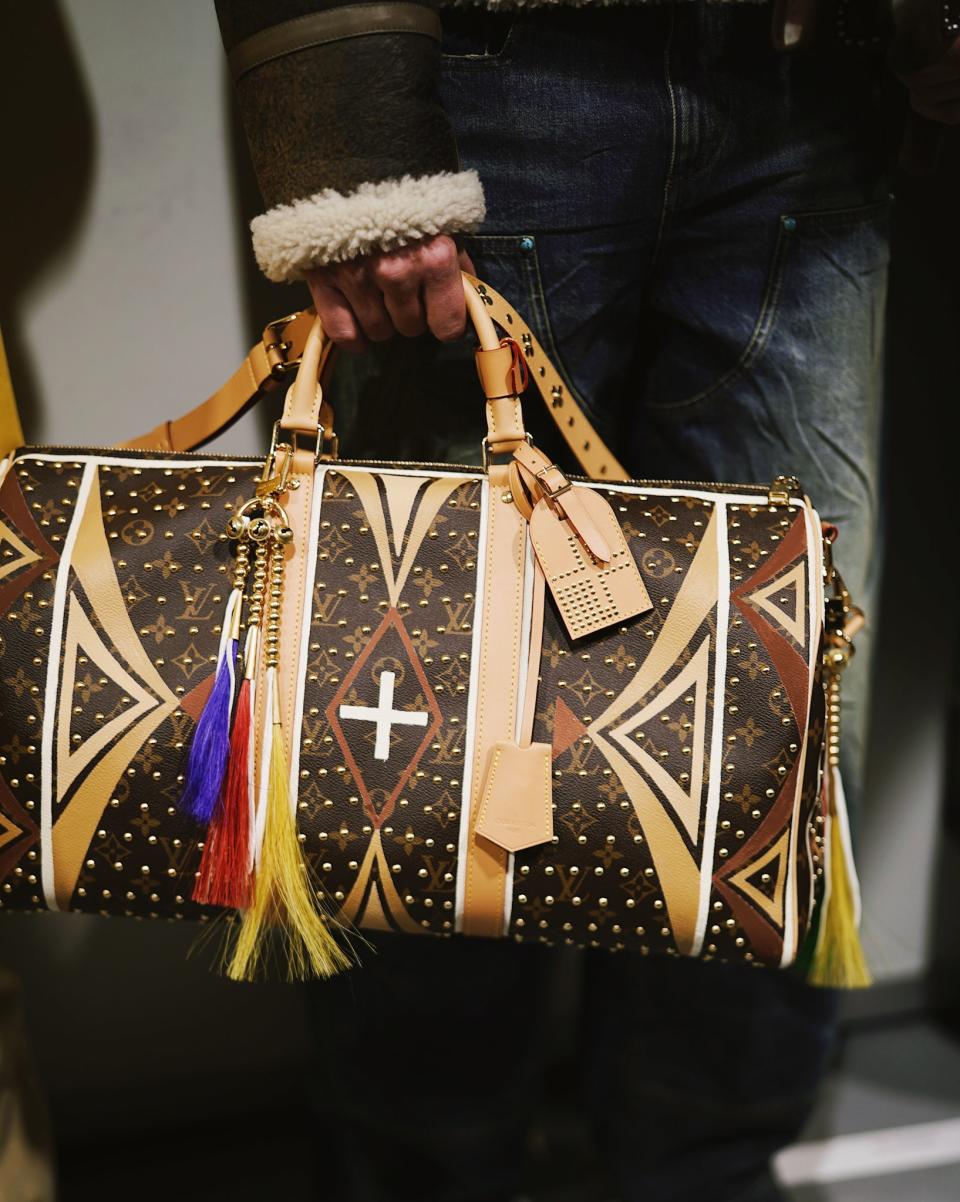
But Pharrell still managed to find some newness in the western genre, thanks in large part to the savoir-faire of the design studios at his command and his seemingly endless openness to collaboration and inclusion. The show opened with a performance by the Native Voices of Resistance of a traditional Lakota song co-composed by Pharrell and Lakota “Hokie” Clairmont. Backstage, Pharrell spoke about the importance of working with the Dakota and Lakota tribes, particularly their traditional artisans, who embroidered a Speedy bag with traditional Dakota flower emblems and hand-painted a series of Keepalls, which came with beaded horse hair tassels.
“One of the things that I'm supposed to do is to take the house to places and tell stories and give a platform to the different destinations that we go to, and how they inspire us not to take anything or appropriate,” he said. “That's not what we are here to do. We are here to appreciate where we go and what we learn, and come back and share those stories in the way that we do when I express myself through the clothes and the show.”
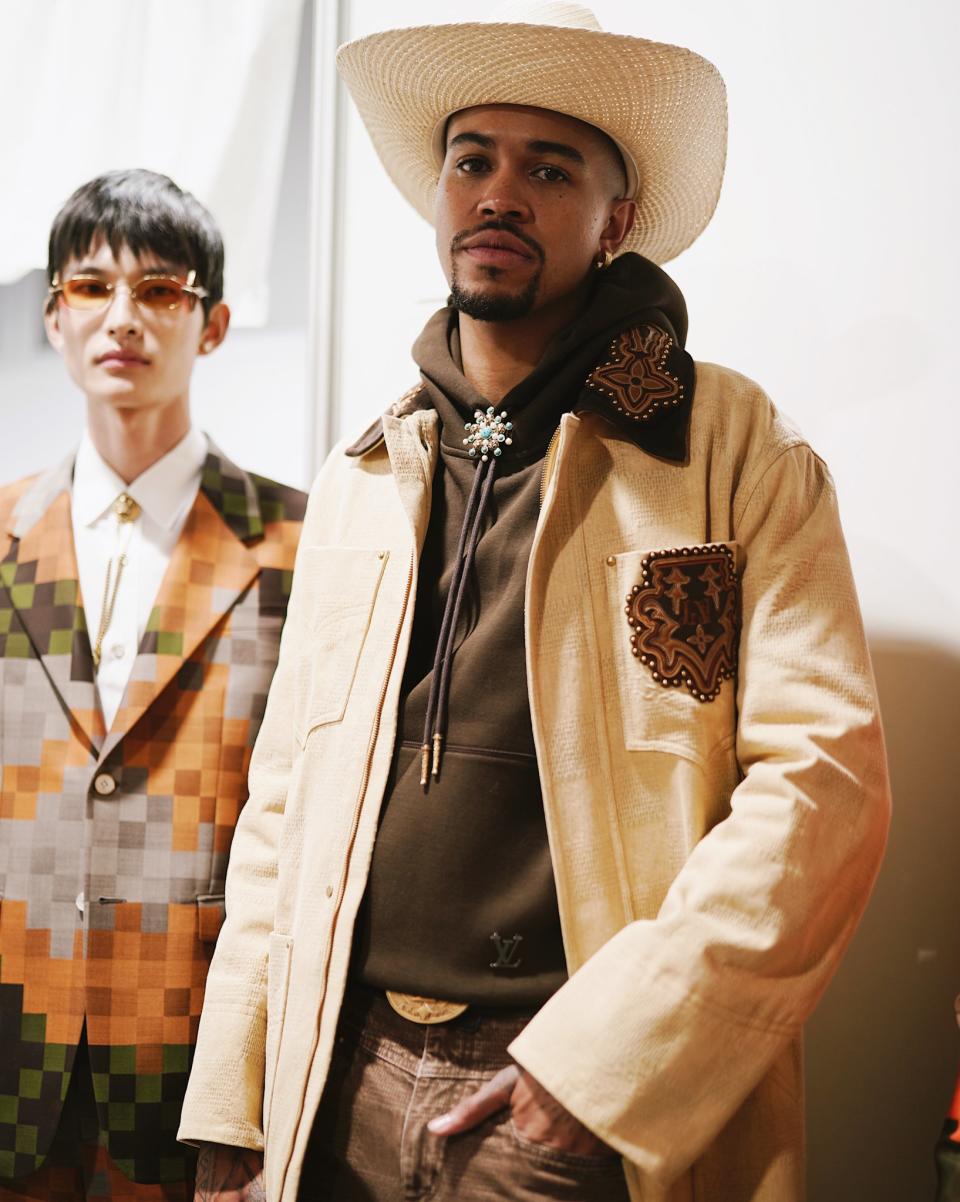
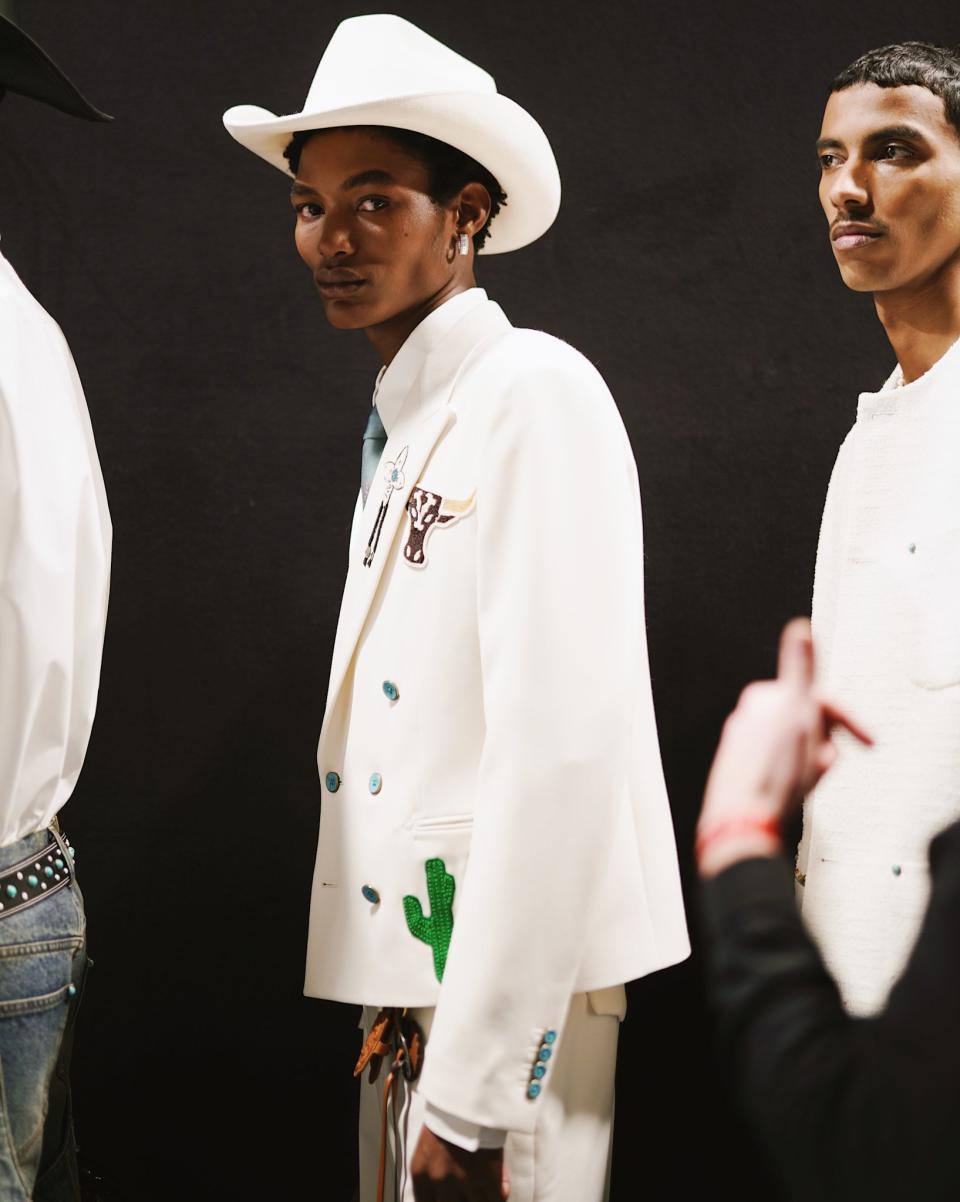
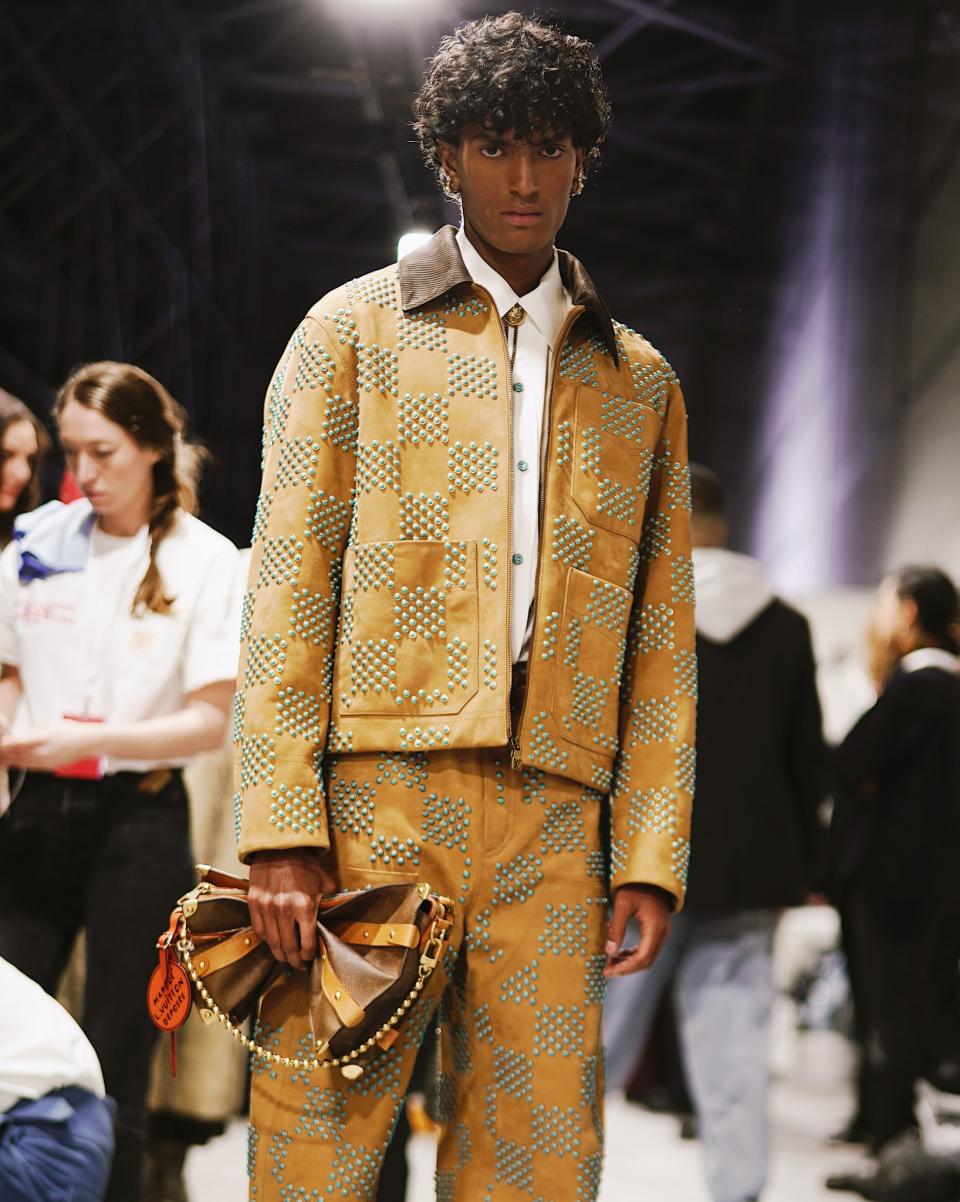
Against that weighty backdrop of American history, Pharrell’s western epic unfolded. Denim appeared in several different shapes and forms, as a trucker jacket painstakingly embroidered with more desert flowers, as chaps, and as lightweight flared jeans made of chambray then washed to faded perfection. Real stone turquoise sourced from Arizona covered buttons on a white nudie suit and a collarless blazer made of velvety croc, as well as a trucker jacket embellished with dozens of bright blue studs. Pharrell’s obsession with the idea of the dandy has so far produced some of his most interesting work, and here he continued to refine his tailoring silhouette. Some blazers were cropped with squared-off hems, as Pharrell prefers to wear, while others were cut full with western yolks, the trousers flaring over cowboy boots handmade and embroidered in Texas, and roper boots made in Italy with soft, pliable leathers and suedes.
Owing to his sheer popularity among civilians but especially celebrities, the experience of attending Pharrell’s fashion shows is kind of like playing a game of pop cultural mad-libs. There’s Bradley Cooper sitting next to Bernard Arnault while Maggie Rogers chats with Swae Lee and Rauw Alejandro. There’s K-pop group Riize causing a traffic jam over by Venus Williams and Taylor Zakhar Perez, while Nigo tries to navigate through to find his seat. There’s Pusha T and Shedeur Sanders modeling in the runway show, as Karlie Kloss bobs her head to the custom Mumfords & Sons soundtrack. (More on that unexpected collaboration here.)
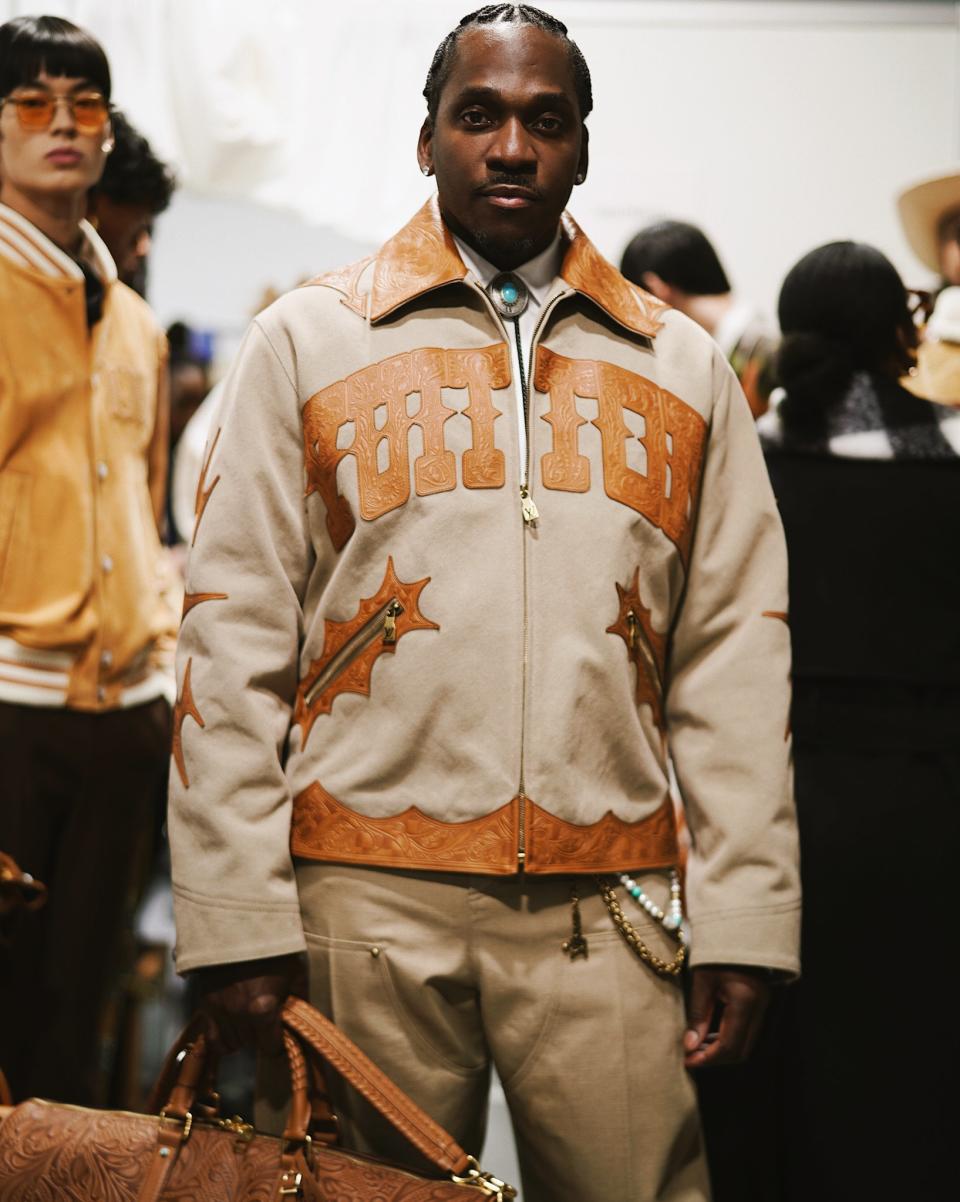
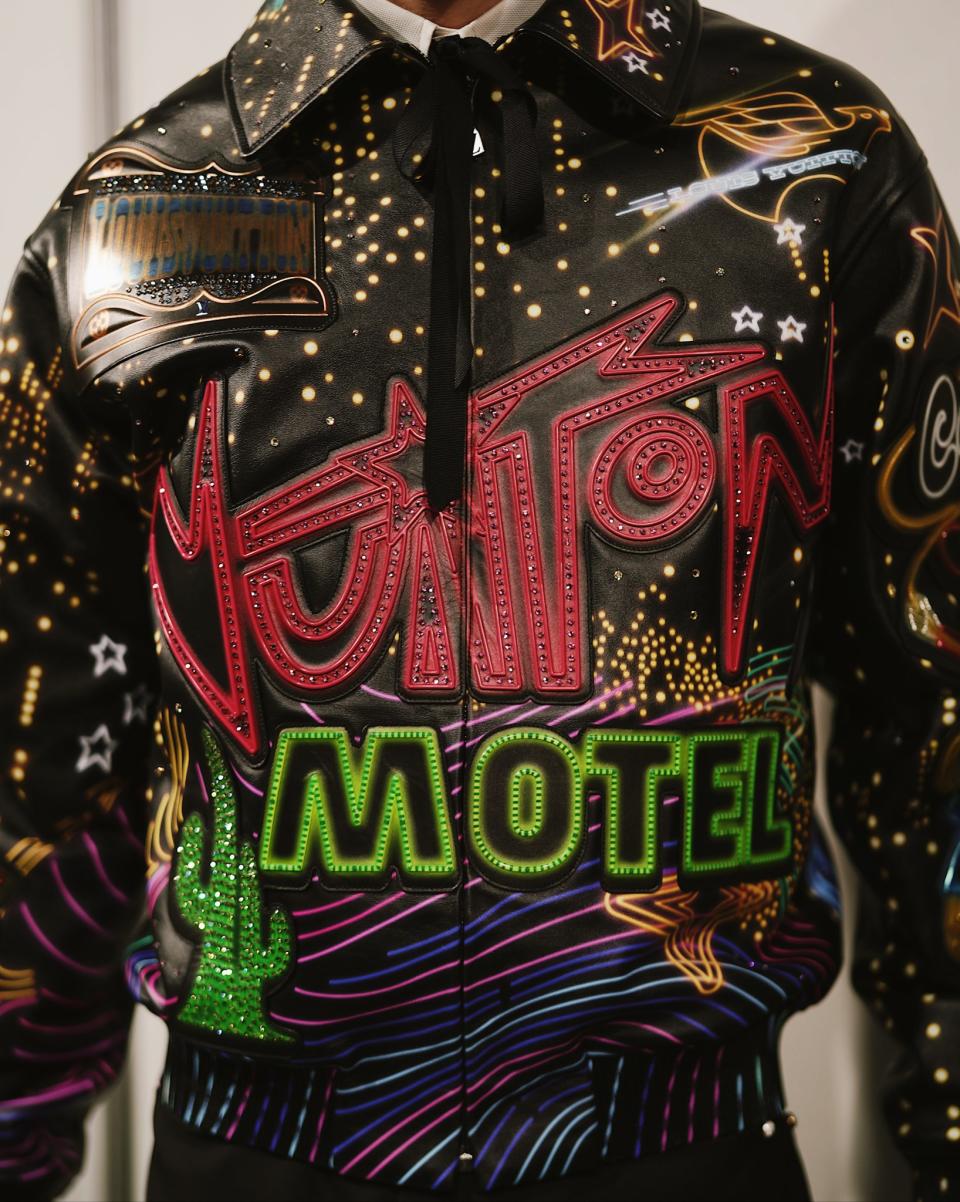
There were more proper nouns in the collection, too, which was stuffed with enough product that just about every attendee could have left with a sample. The workwear story was told through a much-hyped collaboration with Timberland. “Timberland, it just makes sense,” Pharrell said. “It's something that we love, but at the same time, whether you're in the hood or you're somewhere in a factory, Timberlands last long and it's durable. And if you're going to spend your disposable income at a time like this, it needs to be for something that's actually really going to last. And the one thing that you know about Timberland is it's going to last.” Besides the chunky soles, Pharrell’s versions were manufactured entirely by Louis Vuitton and come in several different styles, including one in monogram leather with 18-carat gold eyelets that comes in a custom trunk.
This season also marks the return of the original design of the Millionaire sunglasses that Pharrell and Nigo designed in 2004 with then-LV creative director Marc Jacobs. The “1.0” versions sport the same smoky tinted lenses, while a “3.0” version worn by Pharrell for his bow are made out of carbon fiber and have diamond-studded hinges.
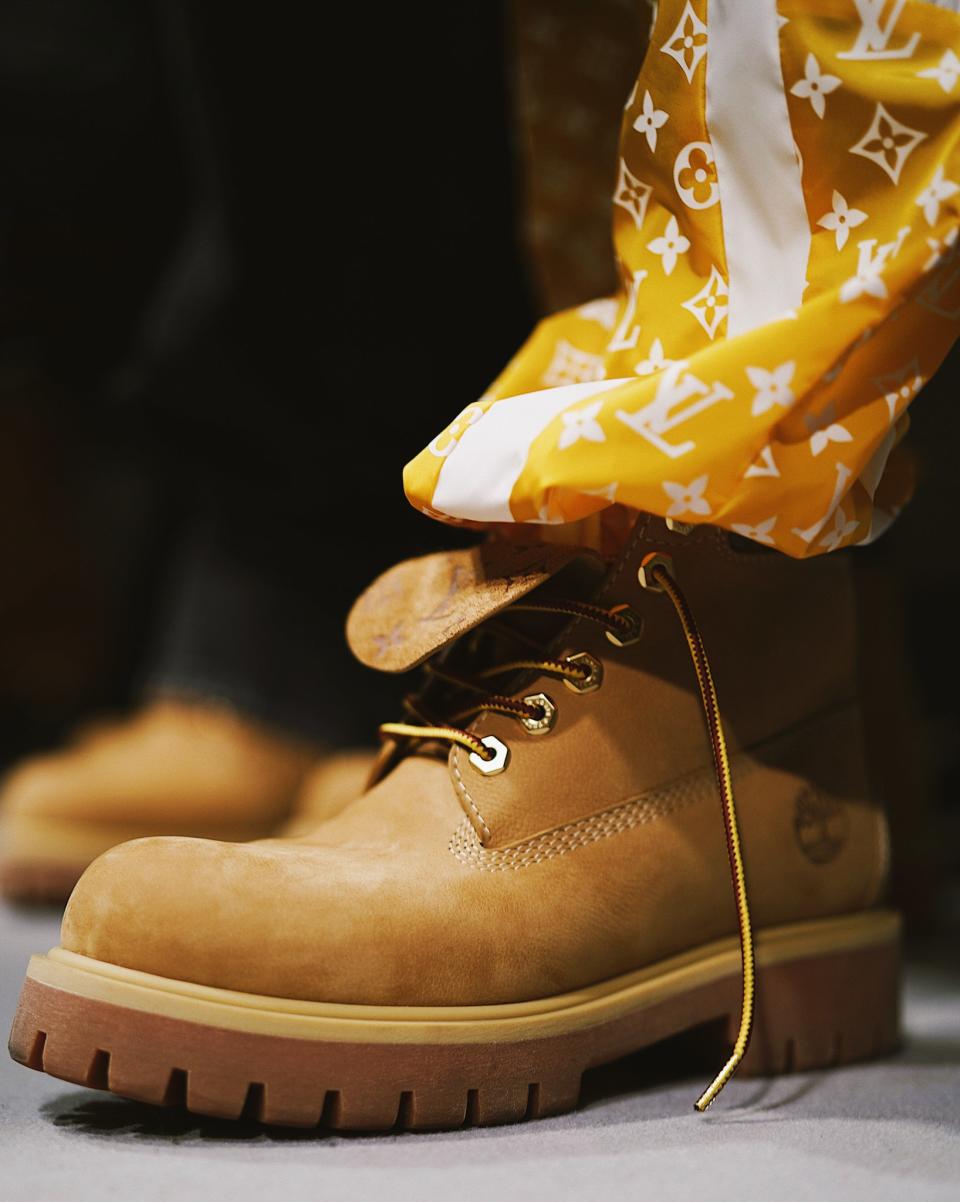
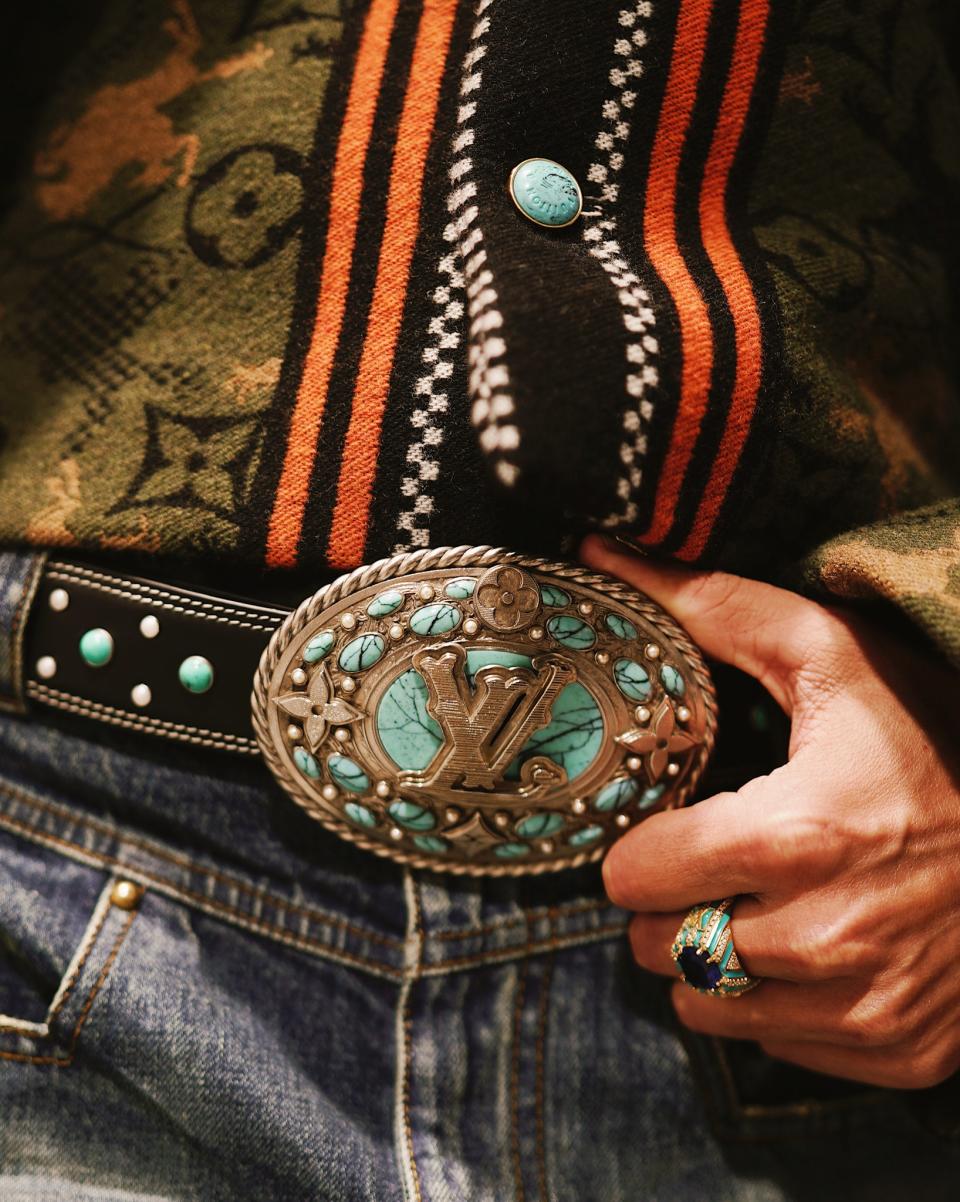
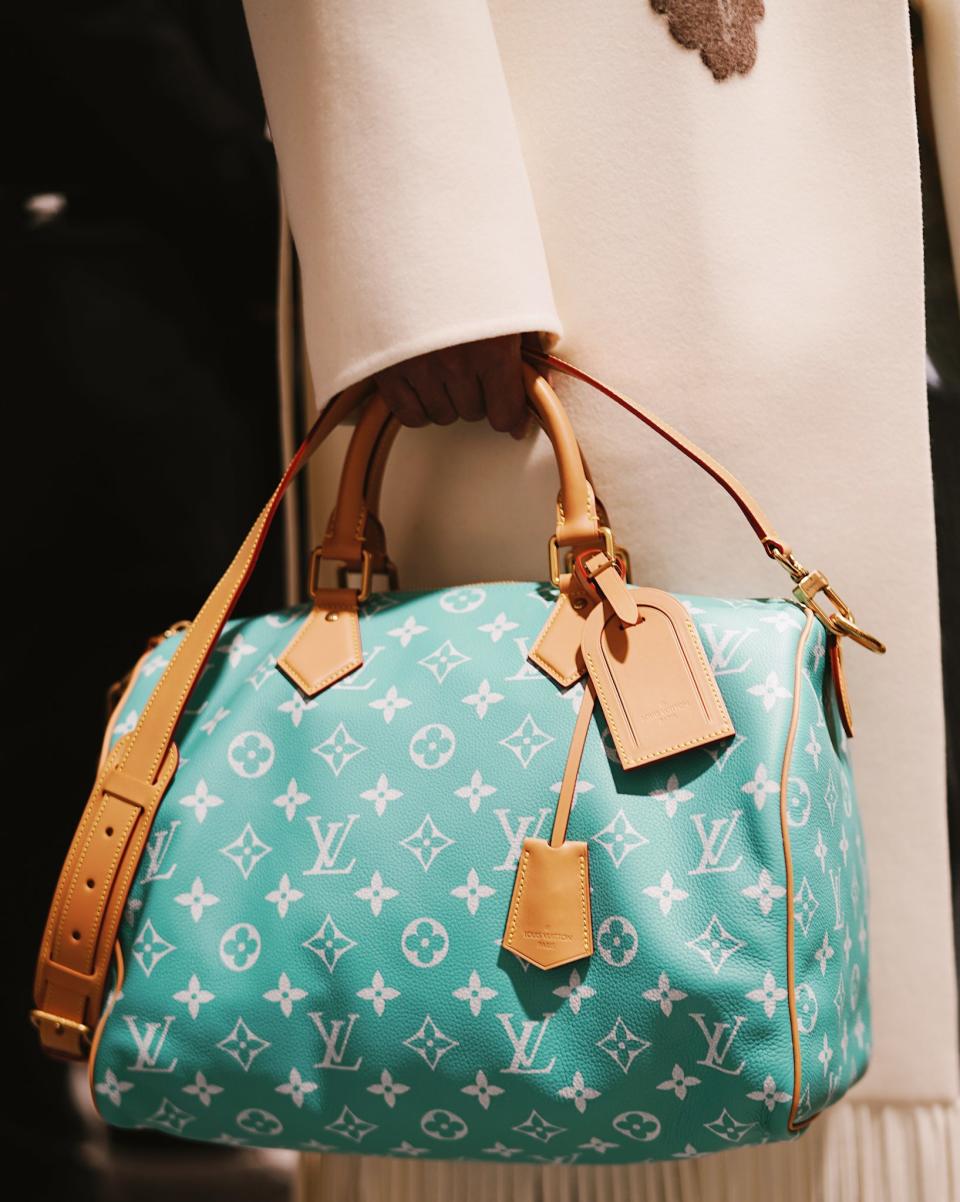
In keeping with past seasons, something like half of the runway collection will actually be produced for stores, and it was fun to try to guess which looks might make the cut. The workwear jackets worn by models maneuvering trunks down the runway on pushcarts? Absolutely. The double-knee trousers in wool and denim and heavy garment-dyed cotton? Of course. The shadow plaid flannel shirts, blanket coats, and luggage sets? Seems likely. The new pattern of the season, called—get this—“Cowmooflage,” a bovine twist on Pharrell’s camo-Damier check mashup, which covered suits and bags and was printed on a calfskin trucker jacket? Probably. A bright red leather moto-rodeo set? Maybe not. But the sheer volume of product offered many ways to navigate Pharrell’s road trip through the American west. You’ve got the luxurious blanket coat that brings to mind the dignified costumes of Killers of the Flower Moon, or the tooled black leather saddlery bags that could be strapped to Nicholas Cage’s bike in Ghost Rider. Some of the fits were a little too on-the-nose, the great pitfall of cowboy fashion collections. But polished up by Pharrell’s curious style inclinations, most of the collection felt modern and cool. Pick apart the costume and you’ll find he upped the ante on the concurrent flared jeans and cowboy boot revival.
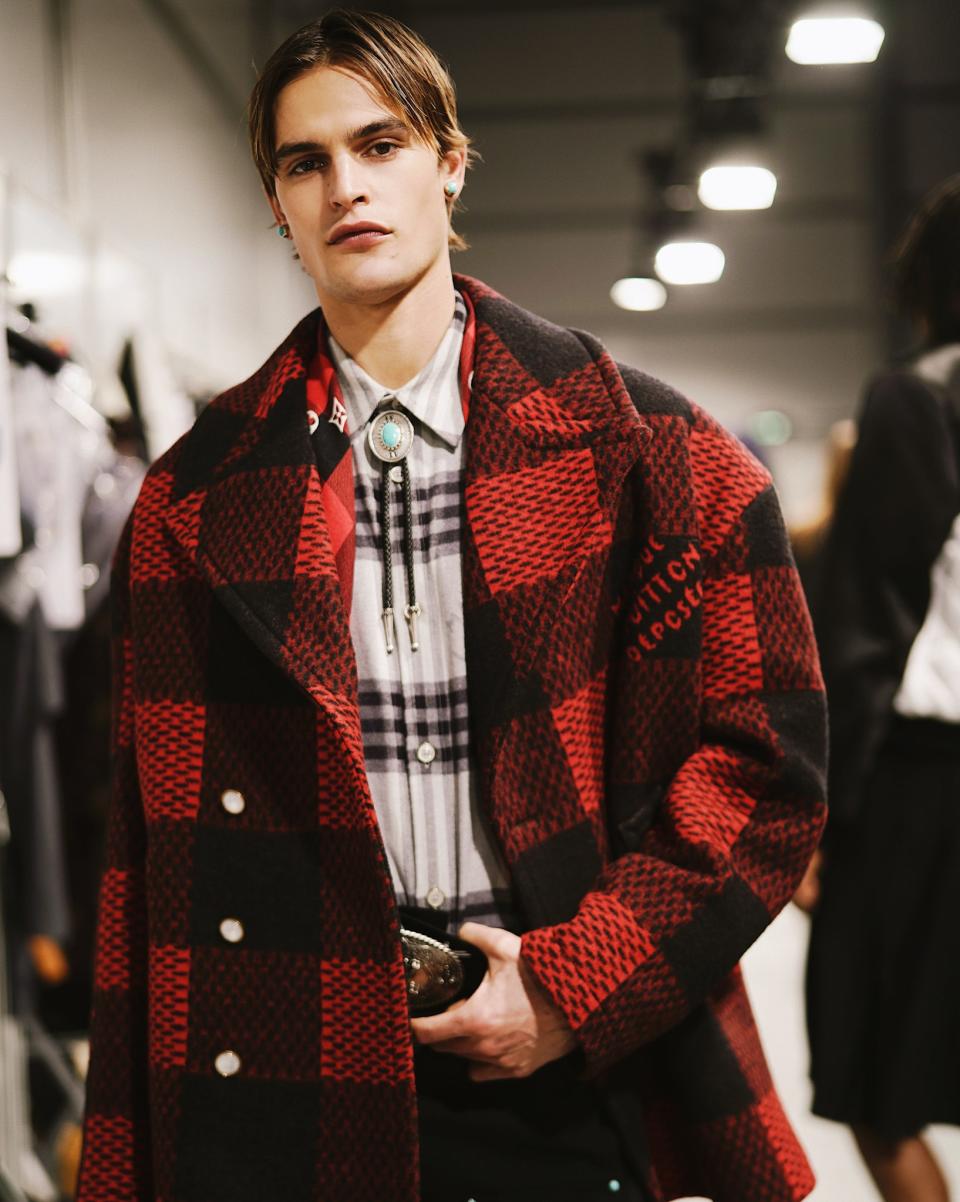
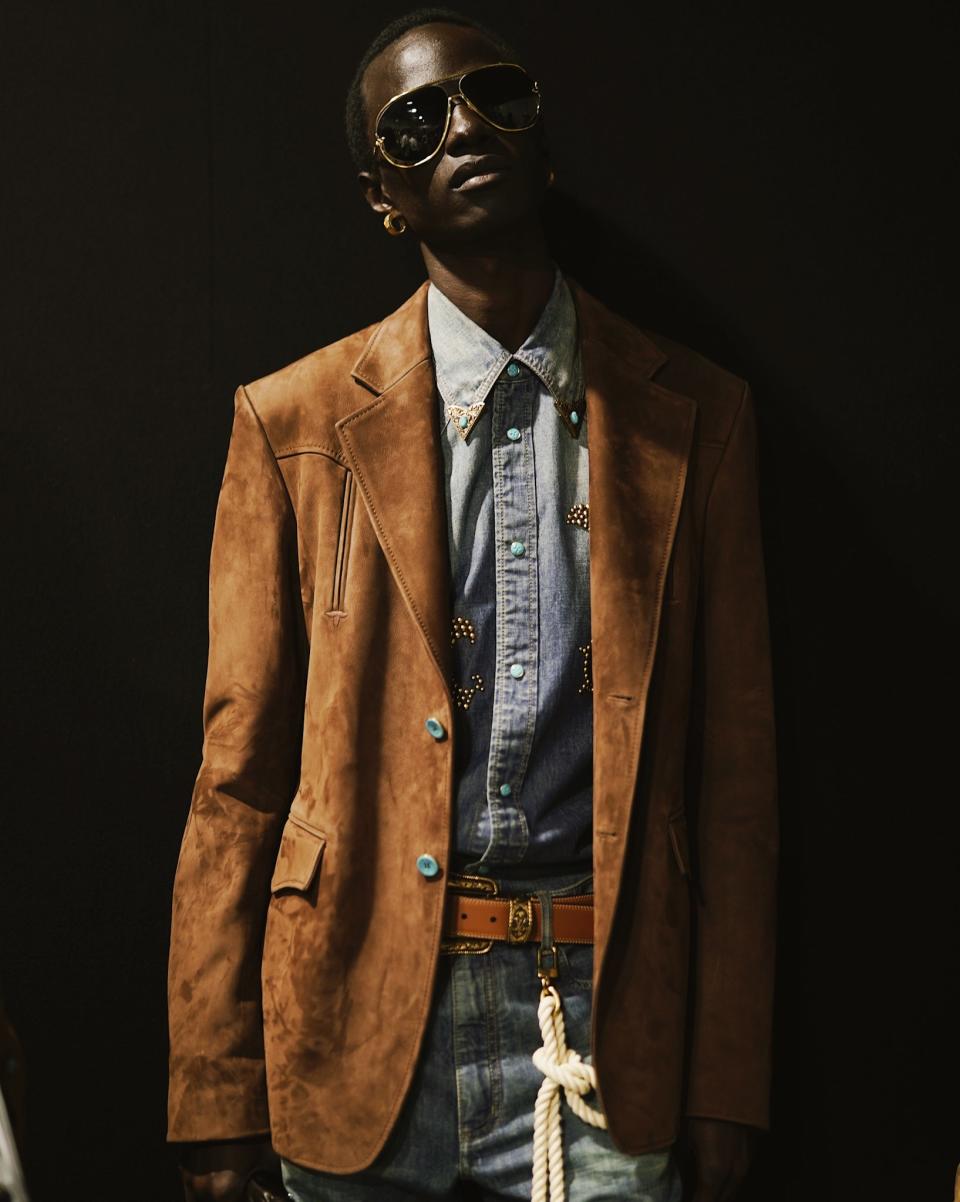
At a VIP reception following the show, Pharrell—flanked by security styled in collection pieces to resemble actual Western sheriffs, seriously—greeted the LVMH-ruling Arnault family and then worked his way through a line of celebrities eager for a photo-op. When he got to the press, he spoke first of the Native Voices, who were set to perform with Mumford & Sons and Pharrell himself at the afterparty a bit later. “Just think about telling your story and telling your people's story as best you can and doing it candidly and with love,” he said, “That's an overwhelming feeling to pull it off, and it felt like we did.” He was talking about his collaborators but also about himself and his mission at Louis Vuitton. “The feeling in the room just felt like a whole lot of love, and that's what the goal was. And I thank God that we got a chance to do that.”
See all of our newsletters, including Show Notes, here.
Originally Appeared on GQ

